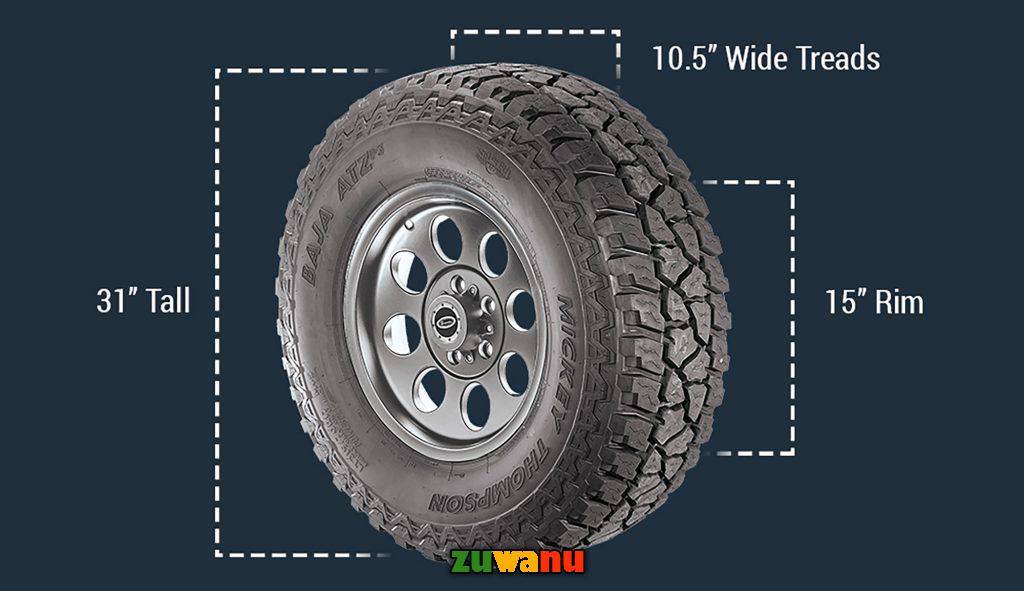10 Proper Ways to Read Tyre Size

Introduction: (10 Proper Ways to Read Tyre Size)
When it comes to understanding your vehicle’s tyres, the alphanumeric code imprinted on the sidewall can be a perplexing puzzle for many drivers. However, deciphering this code is crucial for ensuring safety, performance, and optimal handling of your vehicle. In this comprehensive guide, we will delve into the intricacies of tyre size and explore the ten proper ways to read and understand this alphanumeric language.
- The Basics of Tyre Size:
Before we embark on decoding the tyre size, it’s essential to understand the basic structure of the code. Typically, tyre sizes are expressed in a series of letters and numbers, such as P215/65R15. Each segment of this code provides specific information about the tyre’s dimensions, construction, and performance characteristics.
- Tyre Type Identifier:
The first letter in the code indicates the type of tyre. For example, ‘P’ stands for passenger car tyres, ‘LT’ for light truck tyres, and ‘T’ for temporary spare tyres. Understanding this identifier is crucial, as it ensures that you are fitting the right type of tyre for your vehicle.
- Tyre Width:
The three-digit number immediately following the tyre type identifier represents the width of the tyre in millimeters. In our example, ‘215’ indicates that the tyre is 215 millimeters wide. It’s important to note that a wider tyre may provide better traction, but it can also impact fuel efficiency.
- Aspect Ratio:
The two-digit number after the slash in the code is the aspect ratio, representing the tyre’s profile height as a percentage of its width. In the example ‘P215/65R15,’ the aspect ratio is ’65,’ meaning that the height is 65% of the tyre’s width. A lower aspect ratio often results in better handling, but it may compromise ride comfort.
- Construction Type:
The letter following the aspect ratio denotes the tyre’s construction type. ‘R’ stands for radial construction, which is the most common type in modern tyres. Radial tyres have layers of cord plies arranged at right angles to the direction of travel, providing enhanced performance and durability.
- Rim Diameter:
The last number in the code, in our example ’15,’ indicates the diameter of the wheel rim in inches. It is crucial to match the tyre’s rim diameter with the wheel for proper fitting. Installing a tyre with an incorrect rim diameter can compromise safety and handling.
- Load Index:
The load index is a numerical code that represents the maximum load-carrying capacity of the tyre. This information is crucial for ensuring that the tyre can adequately support the weight of your vehicle. The higher the load index, the greater the load-carrying capacity.
- Speed Rating:
The speed rating, represented by a letter, indicates the maximum speed at which the tyre can safely carry a load. Common speed ratings include ‘S’ for up to 112 mph, ‘H’ for up to 130 mph, and ‘V’ for up to 149 mph. It’s essential to choose a tyre with a speed rating that aligns with your driving habits and vehicle capabilities.
- Additional Information:
Some tyres may include additional information on the sidewall, such as the Uniform Tire Quality Grading (UTQG) rating, which provides insights into treadwear, traction, and temperature resistance. Understanding this information can help you make an informed decision based on your driving needs and preferences.
- Professional Consultation:
While understanding the basics of tyre size is crucial, there may be instances where consulting a professional is necessary. If you have specific driving requirements, such as off-road adventures or high-performance driving, a tire specialist can provide valuable insights and recommendations tailored to your needs.
Reading a tire size may seem complicated at first, but it follows a standardized format that includes information about the tire’s width, aspect ratio, construction type, diameter, load capacity, and speed rating. Here’s a breakdown of a typical tire size and how to read it:
- Tire Width (Section Width):
- The first three-digit number indicates the tire’s width in millimeters. For example, in the size P215/65R15, “215” is the tire width.
- Aspect Ratio:
- After the slash (/), you’ll find a two-digit number representing the aspect ratio. This is the ratio of the tire’s height to its width. In the example P215/65R15, “65” indicates that the height is 65% of the tire’s width.
- Construction Type:
- The letter immediately after the aspect ratio represents the tire’s construction type. Common letters include:
- “R” for radial construction (most common).
- “D” for diagonal or bias-ply construction (less common).
- The letter immediately after the aspect ratio represents the tire’s construction type. Common letters include:
- Wheel Diameter:
- The two-digit number following the construction type letter denotes the diameter of the wheel in inches. In the example P215/65R15, “15” indicates a 15-inch wheel diameter.
- Load Index:
- The load index is a numerical code indicating the maximum load capacity of the tire. You can find this information in a load index chart provided by tire manufacturers.
- Speed Rating:
- The speed rating is a letter indicating the maximum speed at which the tire can carry a load safely. Common speed ratings include “H” for up to 130 mph and “V” for up to 149 mph.
- Tire Type:
- Some tires have a letter before the width indicating the type. Common types include:
- “P” for passenger car.
- “LT” for light truck.
- “ST” for special trailer.
- Some tires have a letter before the width indicating the type. Common types include:
- UTQG (Uniform Tire Quality Grading) Ratings:
- This optional information provides ratings for treadwear, traction, and temperature resistance.
- DOT (Department of Transportation) Code:
- This code indicates compliance with safety standards and includes information about the tire’s manufacturing location and date.
- Tread Pattern or Brand Name:
- Some tires include additional information about the tread pattern or the tire’s brand.
Always refer to the vehicle owner’s manual or consult with a professional if you are uncertain about the appropriate tire size for your vehicle. Additionally, when replacing tires, it’s crucial to match or exceed the original equipment specifications recommended by the vehicle manufacturer.
Conclusion:
In conclusion, decoding the alphabet soup of tyre size is a vital skill for every vehicle owner. The alphanumeric code on the sidewall holds valuable information about the tyre’s type, dimensions, and performance characteristics. By understanding the ten proper ways to read tyre size, you can make informed decisions when choosing new tyres, ensuring optimal safety, performance, and longevity for your vehicle. Remember that regular tyre maintenance, including proper inflation and alignment, complements your understanding of tyre size, contributing to a smoother and safer driving experience.


Leave a Comment